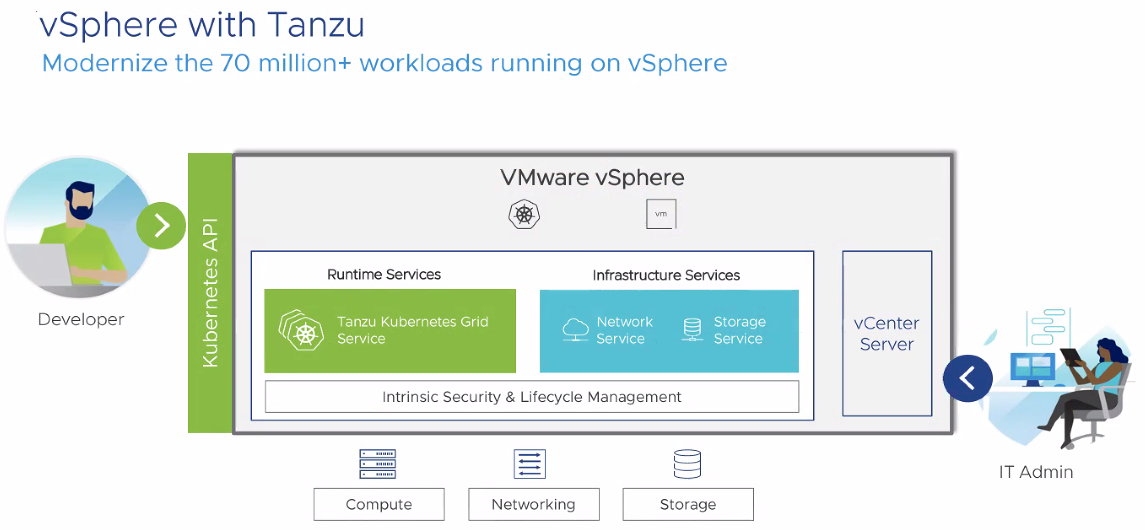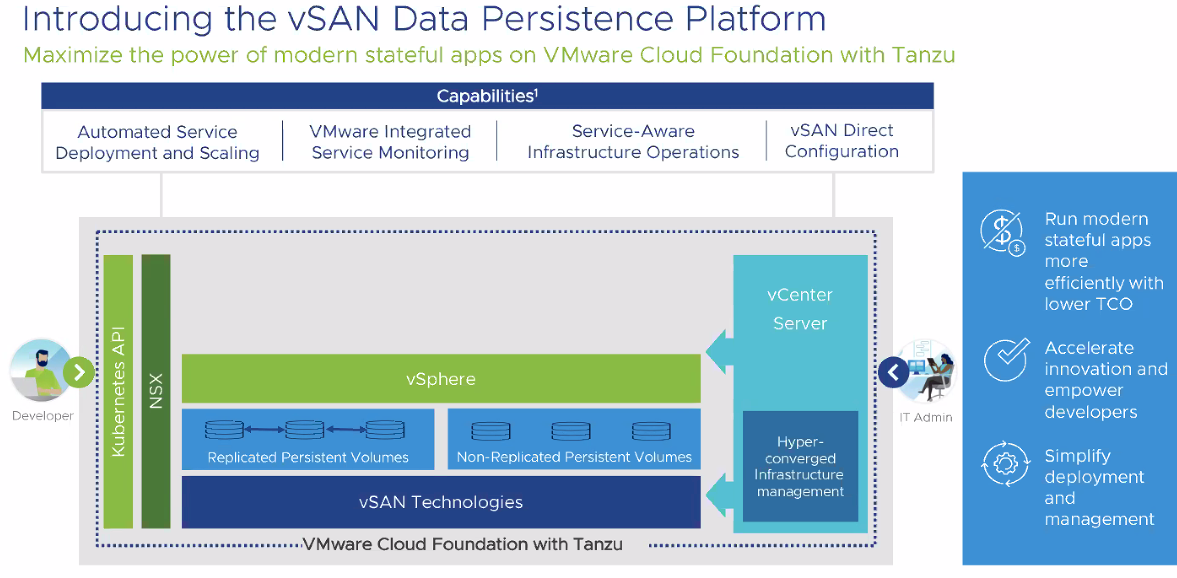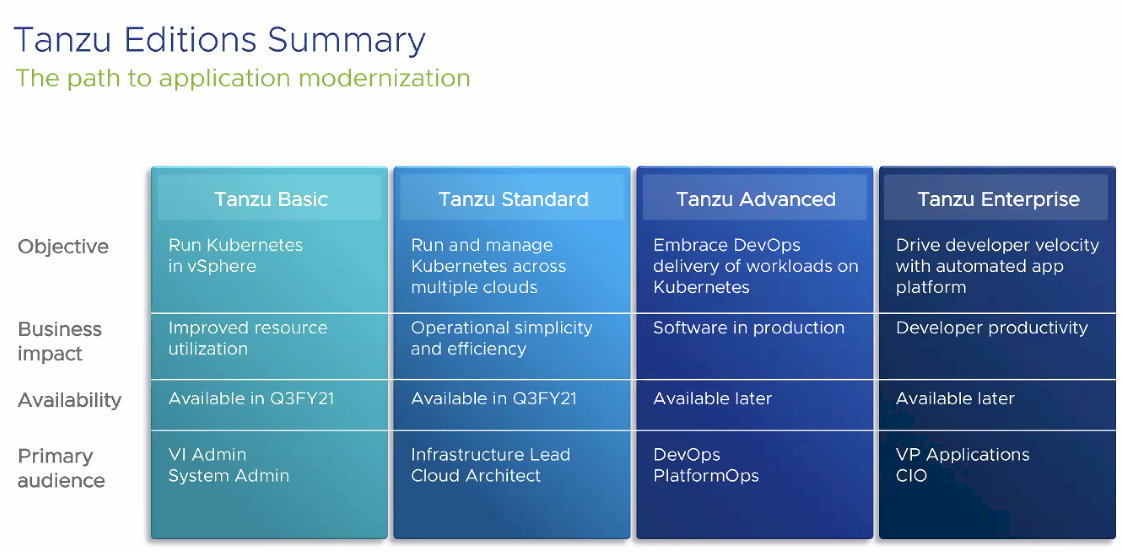
For more than two decades, VMware has made its money sensing the direction that enterprise IT is going and getting there before they do with products to addressing their needs.
It would be hard to find something more fortunate than delivering enterprise-grade virtualization for X86 servers as the Great Recession began more than a decade ago. VMware’s expansion into network and storage virtualization has also been fortuitous, albeit with more of a slow build. All three virtualization techniques not only enable datacenters to do more work with the same amount of hardware, they also provide a greater degree of flexibility, making IT less brittle than it was during the bare metals days.
Given this, it hasn’t been surprising that VMware has made a steady push to extend its reach from the datacenter into the cloud over the past several years, as organizations and developers alike began to migrate workloads and data into the public cloud, demand cloud-like capabilities around agility and scalability in their own datacenters and try to leverage what they could from the legacy systems they had spent millions of dollars building up over the decades. Businesses have rapidly embraced the hybrid cloud business model; according to Flexera’s 2020 State of the Cloud report earlier this year, 87 percent of organizations have a hybrid cloud strategy. About 93 percent have a multicloud strategy. And while only about 30 or so percent of workloads presently are in the cloud, more than half of enterprise workloads and data are expected to be in the public cloud sometime next year.
VMware’s cloud technology is available as a service on Amazon Web Services (AWS) and VMware solutions like vSphere, vSAN storage and NSX-T networking workloads can run as services on Microsoft’s Azure and Google Cloud. More recently, the company has aggressively embraced Kubernetes, the container orchestration platform developed by Google engineers that has since become a foundational technology in supporting containerized workloads being increasingly used by enterprises and developers in to more easily create and move applications and data between their on-premises datacenters and the multiple public cloud environments that they use.
VMware had to become a player in the container space. Its history has been with virtual machines, but containers are becoming the predominant tools for applications in hybrid IT environments. The company in August 2019 unveiled Tanzu, a collection of products and services born out of the VMware’s $2.7 billion Pivotal acquisition last year and designed to enable organizations and developers to more easily create, run, and manage both VMs and containers on Kubernetes. VMware at the same time talked about Project Pacific, a plan to integrate Tanzu with vSphere, its cloud computing virtualization platform, which would enable enterprise users to build, run and manage containerized apps on the it.
Earlier this year, VMware Cloud Foundation 4 with Tanzu, a full-stack hybrid cloud solution with integrated Kubernetes that enabled consistent management of VM and containerized applications. It was the first phase of Project Pacific. In March, the company again raised the pairing of Kubernetes with vSphere, saying it would soon release the latest version of the platform – dubbed vSphere 7 – within a couple of months, an important step considering that vSphere customers number in the hundreds of thousands and run more than 70 million workloads on the platform. The company this week said it will release a version of vSphere with Kubernetes baked in by the end of October, one of several announcements that further pushed forward its Kubernetes strategy. At the same time, Dell EMC unveiled that Tanzu will be integrated into its VxRail hyperconverged infrastructure, which also will be able to leverage capabilities in the latest versions of vSphere and vSAN. Dell Technologies owns more than 80 percent of VMware, and the two companies have collaborated closely on solutions for the cloud.
Kubernetes is a natural extension for VMware, Craig McLuckie, vice president of VMware’s Modern Apps and Platform business, told The Next Platform. The virtualization technology the company pioneered brought levels of abstraction to datacenter hardware. Now Kubernetes is emerging has a key abstraction layer for these modern hybrid cloud environments. McLuckie calls it the Goldilocks abstraction – “It’s a high enough level to hide the details of an infrastructure and a low enough level to pretty much run anything.” It also means at a time when the line between developers and infrastructures continues to blur, developers don’t need to be steeped in distributed systems DNA.
“Consistently across the industry, we see a disproportionately more emphasis on engineering than developing,” he said. “By introducing this high level of abstraction, it enables people to really just focus on developing. If you think about what’s driving our IT budgets at a lot of enterprises, if you think about the challenges they face on a day-to-day basis, developers are the most leverageable assets, so many companies are starting to self-identify as technology companies. Yes, I might be a bank, but I’m actually a software company that’s working in the financial services industry. … When you look at what’s happening out there for every company, as they suddenly have to work with a workforce that is now working from home, the solution to those problems invariably fall on the shoulders of the developers. … At the end of the day, it really is about that developer productivity. Interestingly, it’s not it’s not just about giving developers tools. it’s not just about providing the next cool library or way of coding. It’s about providing the tools while retaining the controls that are necessary to make sure that they’re able to be productive and not end up hurting themselves.”
McLuckie is a key driver of VMware’s Kubernetes strategy. He and Joe Beda, principal engineer at the company, were among the co-founders of Kubernetes at Google and also co-founders Heptio, a Kubernetes ecosystem player that VMware bought for $550 million in 2018, which brought McLuckie and Beda into the fold.
Sheldon D’Paiva, director of VMware’s Cloud Platform Business Unit, said during a briefing with journalists that the integration of Tanzu with vSphere “allows IT operators to offer up infrastructure to developers the way they want to consume it, namely through Kubernetes API while allowing them to use the tools that they already have, the platform that they have, and tools such as vCenter to administer it. … It’s a great way to operate Kubernetes at scale because it’s completely automated. It automatically configures, deploys, lifecycle manages the entire stack for you.”
It will open Tanzu to more VMware users than VMware Cloud Foundation, D’Paiva said.
“The difference between this and VMware Cloud Foundation is that it doesn’t necessarily have the complete stack,” he said. “The customers will be able to get completely integrated Kubernetes, the same value proposition. IT administrators can deploy this drop-in Kubernetes infrastructure right into their environment. Most enterprises have vSphere today. You can drop it right in and you can administer Kubernetes from the same platform, the tools and even the same skill sets that they already have. But the developer or the application owner can consume the infrastructure the way they’re used to doing it, the way they want to do it, through the Kubernetes interface, [which] is an API. With vSphere with Tanzu, customers can bring their own networking, they can bring their own storage. That’s a key difference from VMware Cloud Foundation with Tanzu. vSphere with Tanzu will really, really open up the floodgates for application modernization initiatives and the simple reason for that is it’s by far the leading hypervisor.”
vSphere 7 Update 1 with Tanzu will enable enterprises to use their existing network and block or file storage to configure Kubernetes infrastructure, including extending vSphere Distributed Switch support or Kubernetes clusters. They also will be able to deploy NSX Advanced Load Balancer Essentials or use their own L4 load balancing products, and use vCenter Server to rapidly deploy Kubernetes clusters, provision access based on roles and allocate capacity to developers, giving programmers self-service access to IT infrastructure and drive McLuckie’s vision of a developer community spending more time developing and less time engineering and creating tickets for infrastructure access.
Tanzu’s integration with VMware Cloud Foundation 4.1 also will deliver the vSAN Data Persistence platform, which will let software vendors to create services like NoSQL databases and object storage that can integrate with the infrastructure.
Through vSphere 7 Update 1, VMware also is creating a way for enterprises to use Tanzu without having it integrated in VMware Cloud Foundation. The company unveiled Tanzu Editions, a menu of Kubernetes-based offerings that organizations can choose from to fit their needs.
Tanzu Basic Edition lets enterprises use Kubernetes within their vSphere platform though they can use their own networking and storage, while Tanzu Standard, which includes the Tanzu Mission Control management platform, brings Kubernetes as a service into multicloud environments. Both will be available later this quarter.
“Tanzu Standard Edition is available on vSphere in VCF,” McLuckie said, adding that it’s also available in the VMware platforms in the public clouds. “What we’ve done there is created a common, basic infrastructure abstraction that is entirely consistent. Wherever you want to build and run your applications, whether it’s in the private cloud, whether it’s the public cloud on a VMware-managed property or indeed directly on public cloud infrastructure-as-a-service construct.”
Coming later will be the Advanced Edition aimed at DevOps environments for building more modern applications using Kubernetes and Enterprise Edition, where McLuckie said the focus is on “transforming the way you build software. The idea here is that by providing a very clean, coherent, end-to-end experience that is fully enterprise-grade, we unlock the productivity of the development teams that are the anchors of driving digital transformation for enterprise organizations.”








The availability dates for Basic & Standard in the table appear wrong; shouldn’t they be Q3FY20?